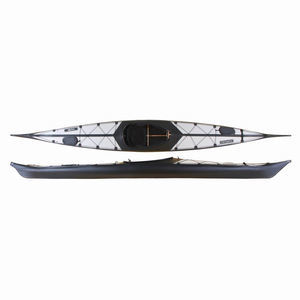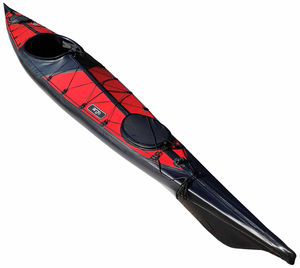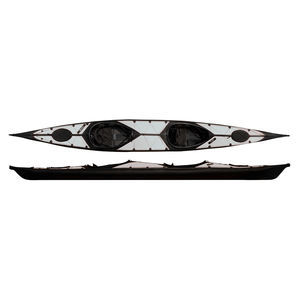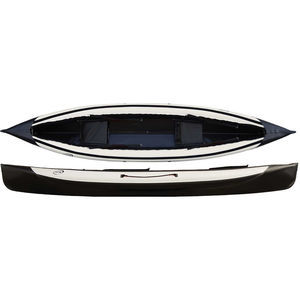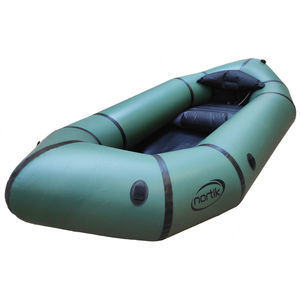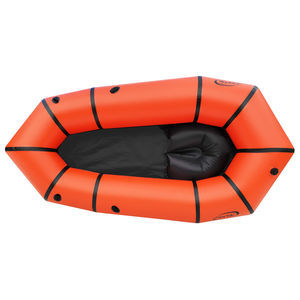

- Products
- Catalogs
- News & Trends
- Exhibitions
Folding kayak nortik fold 4.2seaadultsolo

Add to favorites
Compare this product
Characteristics
- Structure
- folding
- Water
- sea
- User
- adult
- Capacity
- solo
- Level
- beginner
- Material
- HDPE
- Color
- white
- Length
420 cm
(165.35 in)- Width
64 cm
(25.2 in)- Weight
16 kg
(35.27 lb)- Max weight capacity
130 kg
(287 lb)
Description
Already a few years ago, we dealt with some ideas of the late 1960s and early 1970s, which followed the idea of a foldable hard shell kayak. Various patterns and prototypes emerged from these considerations and influences, which we repeatedly rejected due to the problematic material selection. In our opinion, the use of the right material is one of the most important factors in a kayak of this kind. For example, many plastics such as PE or HDPE have a too soft surface structure, while other materials are too brittle or simply unsuitable for folding.
Corrogated plastic is a material that is used by some manufacturers for kayaks of this type. But this material is thin-walled and unfortunately allows irreversible wrong foldings since the material always wants to follow its inner structure and this is not the same like the folding lines have to be. This unfortunately also means that - once misfolded - the inner structure of the corrogated plastic is destroyed at that point inside and the failure remains forever in the boat. From our point of view, such a risk must be excluded from the outset by the material selection. Another problem of hollow-chamber material is also that it can fill with water. This inevitably occurs with the smallest damage to the outer material and can quickly lead to the formation of dirt and algae between and in the small walls inside.
After a long time, we have found a material mixture which has the necessary characteristics for us: robust, UV-resistant, cold-resistant, and the best: extremely tough. The robust solid material (no hollow chambers!) also allows installations like the ones used by hard-shell kayaks.
VIDEO
*Prices are pre-tax. They exclude delivery charges and customs duties and do not include additional charges for installation or activation options. Prices are indicative only and may vary by country, with changes to the cost of raw materials and exchange rates.

